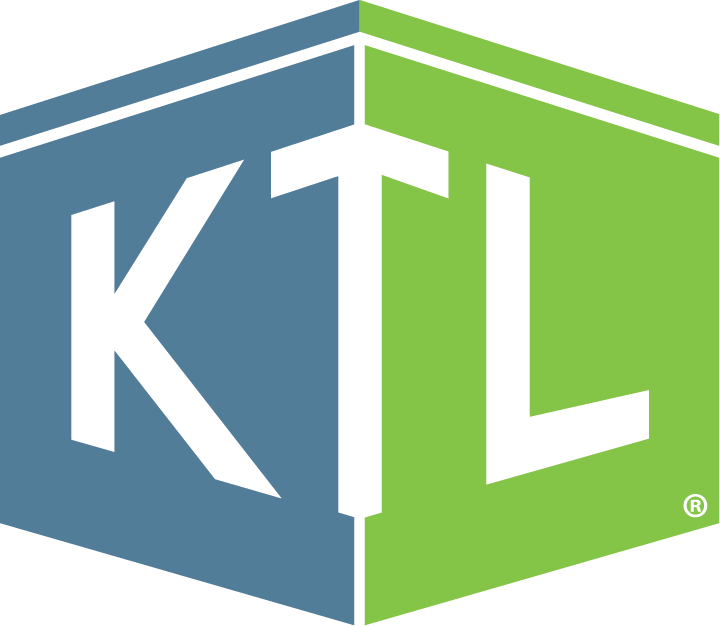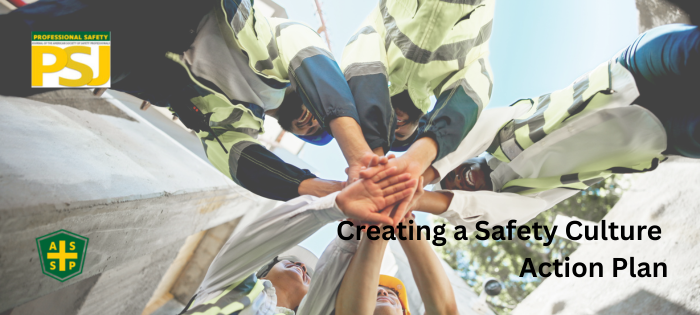
Kestrel Tellevate News / Safety
Comments: No Comments
KTL Safety Culture Article Featured in ASSP’s Professional Safety Journal
An organization’s safety culture is ultimately reflected in the way safety is managed in the workplace. Strong safety cultures have a number of key attributes in common that promote responsible safety and health practices and beliefs across the organization. When these characteristics come together, everyone wins. Benefits that can be expected include:
- Fewer incidents, losses and disruptions
- Improved employee morale
- Increased productivity
- Lower workers’ compensation and insurance claims
- Improved compliance with OSHA regulations and state occupational safety and health programs
- Improved reputation to help attract new or retain existing customers and employees
- Better brand and shareholder value
A safety culture action plan outlines the tools and strategies organizations can use to improve their existing safety culture and ensure that it is integrated with overall business goals, vision, and mission.
Read KTL’s full article, Creating a Safety Culture Action Plan, authored by KTL Senior Associates April Greene, CSP, CHMM, and Will Brokaw, MA, as published in the November 2025 issue of ASSP’s Professional Safety Journal.

KTL to Present on Human Health Risk Assessments
KTL will be joining the technical program of the Society of Environmental Toxicology and Chemistry (SETAC) North America 46th Annual Meeting November 16-20, 2025 in Portland, Oregon. SETAC is dedicated to advancing environmental science and science-informed decision-making through collaboration, communication, eductaion, and leadership.
KTL Senior Associate Margaret Roy will be presenting Representation of the Homeless in Human Health Risk Assessment on Monday, November 17 at 10:00 am as part of Session 5.08: Beyond Direct Contact: Non-Traditional Exposure Scenarios in Human Health Risk Assessment.
Human Health Risk Assessments (HHRAs) are used to assess contaminant exposure and risk to defined populations, such as residents, commercial workers, and construction workers. HHRAs can also be used to assess risk for the homeless population. This presentation will discuss some of the challenges associated with developing an exposure model to represent the homeless sheltering and living on a contaminated site. For example, interviews with individuals may be necessary to develop an accurate exposure model. The presentation will also discuss the importance of the field sampling crew, from observing field conditions to safety concerns.
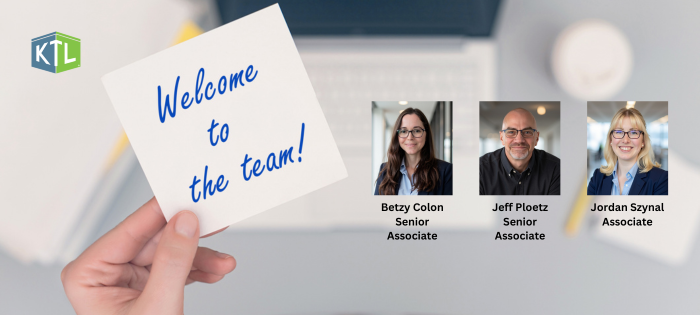
Comments: No Comments
KTL Expands Technical Resources
KTL is pleased to welcome the following new Associates to our team!

Betzy Colon, Senior Associate
Betzy is a senior environmental and social safeguards specialist with nearly 20 years of experience managing multi-sector investment projects, with a focus on project planning, safeguards implementation, strategic monitoring, and regulatory compliance. She has technical expertise in environmental management systems, environmental compliance audits and inspections, human health and ecological risk assessments, site investigations and remediation under CERCLA and RCRA, environmental permitting, and spill prevention and response. Betzy is based in Washington, D.C. Read her full bio…

Jeff Ploetz, Senior Associate
Jeff is an interdisciplinary environmental specialist with over 25 years of experience in environmental, social, and climate risk management. He has a proven track record of strengthening international development programs, environmental regulations, environmental impact assessment procedures, and knowledge management systems. He further has expertise in circular economy; climate mitigation/resiliency; energy efficiency; sustainable development; environmental, social, governance (ESG); strategic planning; and training and technical support.Jeff is based in Arlington, VA. Read his full bio…

Jordan Szynal, Associate
Jordan is an experienced quality and food safety professional with a background working in the chemical manufacturing and construction industries. She is well versed in developing and managing programs, standard operating procedures (SOPs), and work instructions to comply with quality and food safety regulatory compliance and certification requirements. Jordan is based out of the Chicagoland area. Read her full bio…
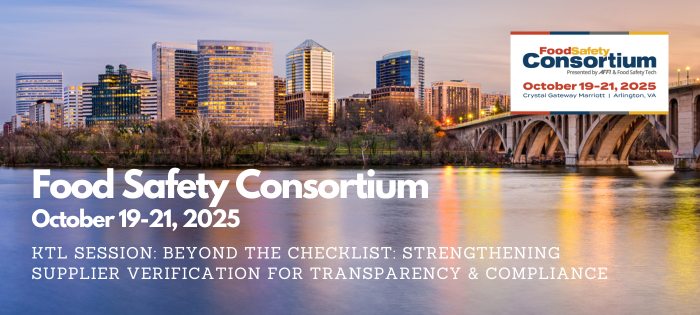
KTL Returns to the 2025 Food Safety Consortium
KTL will be joining the 2025 Food Safety Consortium in Arlington, VA, October 19-21, 2025, as a featured panelist and exhibitor. The 14th Annual Food Safety Consortium provides food safety and quality assurance professionals with cutting-edge knowledge, practical skills, and a collaborative network to enhance their professional development as champions of food safety.
KTL will be a panelist on the following breakout session as part of the workshop’s technical agenda:
Beyond the Checklist: Strengthening Supplier Verification for Transparency and Compliance
October 21, 2025 | 9:30-10:30 am | Panelist: Roberto Bellavia, Senior Consultant and Partner
In today’s dynamic regulatory environment, supplier verification is no longer just a documentation exercise—it’s a critical component of a resilient and transparent supply chain. This session will explore how food manufacturers, retailers, and foodservice operators are leveraging digital platforms, risk-based strategies, and FSMA-aligned best practices to ensure supplier compliance and mitigate potential disruptions. Learn how to build verification programs that go beyond minimum requirements to proactively manage risk, foster trust with trading partners, and adapt to evolving traceability expectations. Whether you’re preparing for FDA inspections or looking to streamline supplier onboarding and oversight, this session will equip you with actionable strategies to enhance both transparency and performance across your supply network.
And be sure to stop by and visit us at Booth #21. We look forward to seeing you at the Food Safety Consortium!

MECC 2025: KTL to Present on OSHA Fundamentals, IT Tools & EHS Challenges
KTL is excited to be joining the 2025 Midwest Environmental Compliance Conference (MECC) in Overland Park, Kansas, September 15-16, 2025, as a sponsor, presenter, and exhibitor. MECC takes a fresh, regional approach to the increasingly difficult task of environmental compliance, permitting, enforcement, and other critical environmental issues that impact Midwest facilities and institutions.
KTL will be leading the following sessions as part of the workshop’s technical agenda:
OSHA Fundamentals for Advancing Environmental Professionals
September 15, 2025 | 8:45 am | Presenter: April Greene, CSP, CHMM, Senior Consultant
Moving from environmental specialist to EHS leader means you suddenly need to know about fall protection, lockout/tagout, confined spaces, and more. This session gives environmental professionals the strategic safety overview on critical safety programs.
IT Tools for EHS Compliance: Demo
September 15, 2025 | 11:15 am | Presenter: Joseph Kunes, Consultant
Building an EHS IT system doesn’t have to be complicated or expensive. Most companies already
have the software they need. Learn how to build data management tools to collect, track, & report EHS
compliance information using the latest Microsoft 365 and Power Platform apps. See examples and
hear from EHS/IT experts on how you can benefit from this approach.
Navigating EHS Challenges in the Food Industry: Panel
September 16, 2025 | 9:40 am | Moderator: Joe Tell, Principal
In the fast-paced and highly regulated world of food production, EHS professionals play a critical role in maintaining operational excellence while protecting workers, consumers, and the environment. This panel brings together experienced EHS managers from across the food industry to share real-world insights, lessons learned, and practical strategies for overcoming today’s pressing EHS challenges. The session will offer takeaways to strengthen your EHS programs and drive continuous improvement.
And be sure to stop by and visit our booth in the exhibit hall. We look forward to seeing you at MECC!

KTL to Exhibit at the 155th Congress of Correction
KTL will be exhibiting at the American Correctional Association’s 155th Congress of Correction in Denver, CO, August 21-26, 2025. The Congress features a wide array of workshops and sessions focused on cutting-edge topics for correctional facilities. The educational workshops feature the best in the business, passing on critical knowledge and engaging in important discussions, while the expansive exhibit allows attendees to interact with hundreds of companies serving the correctional industry.
Be sure to stop by and visit KTL at Booth #871. We look forward to seeing you at the Congress of Correction!
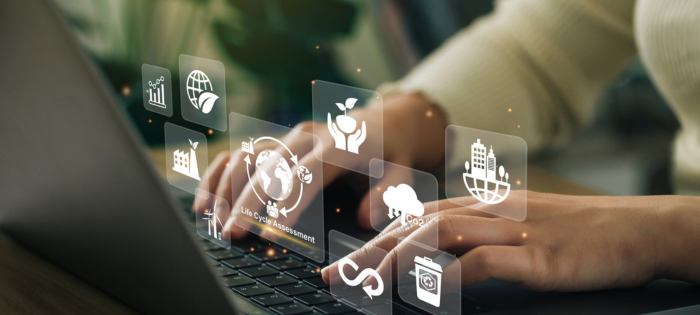
Comments: No Comments
Environmental Risk Assessment: Q&A with the Expert
Risk-based concepts are everywhere. Most decisions we make—knowingly or not—are based on assessing the probability of an outcome or risk. Sometimes the potential outcomes of a decision are clear; sometimes it takes considerable analysis to draw conclusions regarding potential outcomes (i.e., what could go wrong?) and the likelihood and severity of those outcomes (i.e., how bad could it be?).
When it comes to environmental, health, and safety (EHS), it takes significant scientific knowledge, deep understanding of exposure, and a systematic process (i.e., an environmental risk assessment) to identify and evaluate risks and then make decisions on how to mitigate, manage, or remove them. We recently sat down with KTL Senior Consultant and risk expert Margaret Roy to talk more about the concept of risk and risk assessments.
Q: What is a risk assessment?
A: Risk assessment is a general term that summarizes an approach to identify uncertainties (i.e., risk), rate or gage the magnitude of the risk(s), and then develop a strategy to manage or reduce those risks. Managing risk is about managing uncertainties.
For example, you may choose to wait a few days to drive through a mountain pass that is expected to receive snow. You may or may not get stuck or involved in a car accident—it is uncertain—but you reduce your risk of an incident by waiting until after the storm and the roads have been cleared. In this case, a simple risk assessment was completed to manage the uncertainties associated with driving through a snowy mountain pass. Other management strategies could have been to take an alternate route or to drive a vehicle better suited for snowy conditions.
Q: What is an environmental risk assessment?
A: An environmental risk assessment characterizes the nature and magnitude of health risks to humans and ecological receptors from stressors (i.e., physical, chemical, or biological) that may be present in environmental media such as soil, drinking water, or air.
We are exposed to a variety of chemicals (e.g., that new car smell) and biological agents (e.g., the common cold) every day, and health-based risk assessments help manage what and how much we are exposed to. Human health risk assessments address questions such as:
- What types of health problems may be caused by an agent (like a chemical or radiation)?
- What is the chance that people will experience health problems when exposed to different levels of these agents?
- What is a “safe” level?
- Who is being exposed (children, the elderly)?
Ecological risk assessments ask the same questions as human health risk assessments, but for an ecosystem. Ecological risk assessments address questions such as:
- Would metals in a stream near an old abandoned mine damage the population of fish in the stream? If the fish population is impacted, what about the birds, mammals, reptiles, and amphibians that may live near the stream?
- Can the application of an insecticide harm an endangered bird species?
- What are the long-term effects on the ecosystem in a bay following the accidental release of oil from a tanker?
Q: What do environmental risk assessments evaluate?
A: Whether focused on human health or ecological impacts, at its core, an environmental risk assessment is exposure analysis—who is exposed to what, where, and how much? Everything has the potential to be poison; what makes the difference is the exposure or dose. Think about water consumption as an example. Drinking water is a healthy habit; however, too much water (gallons of water in an hour) can lead to water intoxication, which can result in negative health impacts or even death. The dose is what makes the poison.
For there to be negative health impacts, there need to be three key elements present. Together, these elements create a complete exposure pathway:
- Stressor. Environmental risk assessments generally consider chemicals such as benzene and acetone, as well as inorganics like mercury or arsenic.
- Exposure. A person or animal ingests or inhales the chemical, or it is absorbed through the skin.
- Toxic Effect. The recipient experiences some sort of negative impact or toxic effect.
For example, we can ingest water without any ill effects, but past a certain amount, electrolytes in your body go out of balance. For lead, exposure to a child over time can lead to developmental and lifelong health issues.
Q: What is the process for conducting an environmental risk assessment?
A: The process for conducting an environmental risk assessment has been developed by the scientific community over the past 60 years. The Environmental Protection Agency (EPA) and many states publish guidance documents and analyses of chemical toxicity that are applied using the following process:
- Define the Problem: What are the chemicals, where are the chemicals (e.g., drinking water, air), what are the concentrations of the chemicals?
- Quantify the Exposure: Who is being exposed? For example, is it a residential community, a worker, or bird in a forest?
- Calculate the risk: Risk is defined by comparing the exposure dose to a safe concentration.
Risk assessment is much more than just a number. As part of the risk assessment, risk characterization must consider multiple variables, and then apply a big dose of common sense: Who is exposed, is it a vulnerable group like children? How do the chemicals move in the environment or change in our bodies? Are some of the assumptions used in developing the risk assessment overly conservative given the site conditions (e.g., does a bird really live on the site its whole life and consume only earthworms?)? Risk characterization is a very thoughtful process that considers the big picture of the risk assessment.
Q: How certain are the results of an environmental risk assessment?
It is important to note that all risk assessments carry some level of uncertainty, as risk assessors must often estimate exposure, use their own experience and judgment, and rely on scientific research to calculate risks. This is why it is important that the risk assessor have substantial knowledge and understanding of exposure in a variety of technical areas, including:
- Ecology
- Toxicology/ecotoxicology
- Analytical chemistry
- Soil/sediment
- Geology/hydrogeology
- Surface water/groundwater modeling
- Demographics/population biology
- Statistics
- Communication
- COMMON SENSE
Good risk assessments discuss data gaps and other limitations in models and assumptions used to estimate exposures. Note that because of the inherent uncertainties, risk assessment is often an iterative process that involves screening initial information, identifying gaps, refining the scope of the assessment, and then collecting and assessing additional data.
Q: How are risk assessment results used?
A: Put simply, risk assessment informs risk management decisions. Risk management integrates the results of the risk assessment with other considerations (e.g., economic implications, legal concerns) to determine what risk reduction/management activities should be implemented. Importantly, risk assessment/management pays particular attention to connections. What is all connected? Where is the contaminant traveling? How does one decision to manage risk impact the rest of the supply chain or ecosystem?
There are many different ways risk assessment is used, including the following:
- Evaluating the likelihood that observed effects are caused by past or ongoing exposure to specific stressors and then predicting the likelihood of future effects.
- Supporting many types of actions, including:
- Regulating hazardous waste sites, industrial chemicals, and pesticides.
- Reusing property and material (e.g., soil, gray water, brownfield sites).
- Protecting ecosystems from chemical, physical, or biological stressors.
- Setting environmental limits for chemicals.
- Conducting Superfund site remediation.
- Providing information to risk managers that can be used to:
- Communicate with interested parties.
- Limit exposure to the ecological stressor.
- Negotiate remediation options with stakeholders (e.g., brownfields sites).
- Develop monitoring plans to confirm risk reduction and ecosystem recovery.
Q: How do I know if I need an environmental risk assessment and how do I proceed?
Environmental risk assessments are often driven by regulatory programs. For example, if you own a gas station and you have a leaking unground storage tank (LUST), then your company may enter a state’s LUST program. The risk assessor would help figure out where to sample to understand how far the contamination has traveled, who may be exposed, and how much soil should be remediated or removed to mitigate the risks. There is a risk that gasoline could leach down to the groundwater. If the groundwater is a drinking water source, then many people could be exposed. Removing the soil may be the best way to mitigate the risk to groundwater.
Risk assessment, in general, is also a tool that can—and should—be used to evaluate the risks associated with business decisions. For example, a local farm has access to an irrigation well, but the groundwater is known to have low levels of solvent. Risk assessment could be applied to assess whether the irrigation water is safe for the workers to be directly exposed to, but also if the water is safe to use on the agricultural crops. The assumptions used in the exposure analysis could be tailored specifically to the conditions at the local farm so the best decisions on use of the irrigation water can be made.
Risk assessment is a strategy that can be applied to all sorts of different businesses and industries, but conducting a health-based risk assessment requires specialized expertise. Bringing in a risk expert is prudent to help ensure that the entire exposure pathway is evaluated and the most effective risk management solutions can be identified and implemented.

Don’t Miss KTL at the 2025 Food Safety Summit
Join KTL at one of the premier events in the food industry–the 2025 Food Safety Summit. The Summit offers a unique opportunity for attendees to learn real-world solutions from leaders in food safety and stay informed on the latest food safety trends, innovations, emerging challenges, and more.
- When: May 12-15, 2025
- Where: Donald Stephens Convention Center, Rosemont, Illinois
- Who: Retailers, food processors, distributors, food manufacturers, growers, food service, testing laboratories, importing/exporting, law firms, and other food safety professionals
- Find KTL: Stop by our booth (#408) in the exhibit hall!
Tech Tent Case Study Presentation
Be sure to also update your agenda to attend KTL’s Tech Tent presentation on Wednesday, May 14 at 11:15 am CT:
Case Study: Using Microsoft SharePoint® and the Power Platform to Manage Food Safety Programs
Building a food safety system doesn’t have to be complicated or expensive—not when most companies already have the software they need. See how KTL helps food companies build dynamic data management tools to collect, track, and report food safety compliance information. This presentation will highlight our standard modules and most used tools and templates, including:
- Inspections and Monitoring
- Corrective Actions
- Task Management
- Preventive Maintenance
- Supplier Management
- Document Control
- Records Management
- Data Tracking and Trending
- Reporting Dashboards
Join KTL to see these modules in practice and learn from experts with food safety and IT expertise how your company can benefit from this approach.

Comments: No Comments
Traceability Rule Compliance Date Extension
Traceability has been a hot issue for most food companies since the Food and Drug Administration (FDA) passed the final Food Traceability Rule in November 2022, especially with the original January 2026 compliance deadline approaching. However, food companies will likely have extra time to prepare, as the FDA announced on March 20, 2025 its intention to extend the compliance date for the Food Traceability Rule by 30 months.
Additional Time
KTL originally reported in our Top Food Trends for 2025 article of speculation that this deadline could be delayed due to a provision in the current draft House appropriations bill that would prohibit funding for implementation, administration, or enforcement of these regulations. According to FDA, “The compliance date extension affords covered entities the additional time necessary to ensure complete coordination across the supply chain in order to fully implement the final rule’s requirements—ultimately providing FDA and consumers with greater transparency and food safety.”
The FDA is planning to follow appropriate procedures and publish a proposed rule to extend the compliance date at a later time to be determined. The Agency remains committed to implementing the full requirements of the final rule but giving industry additional time to comply and itself time to provide additional technical assistance, tools, and other resources to assist industry.
Stay the Course
Regardless of the compliance deadline, organizations should continue working on their traceability systems and programs. This includes performing traceability exercises to help identify gaps, testing protocols and verifying effectiveness, implementing corrective actions, and ensuring adequate traceability processes are in place. Investing in a good technology solution that integrates with the food safety management system (FSMS) will help to further streamline the process.
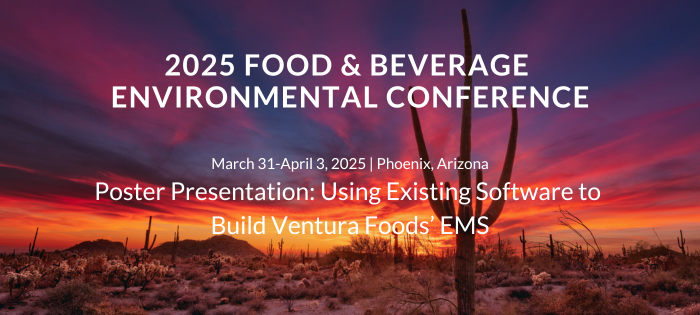
KTL to Present at the Food + Beverage Environmental Conference
The Food + Beverage Environmental Conference (FBEC) is the premier and most comprehensive environmental event for the food and beverage industry in the U.S., focusing on the latest trends and innovations affecting sustainability, water resource management, supply chain, air quality, environmental compliance, and much more.
When: March 31 – April 3, 2025
Where: Rennaissance Downtown Phoenix
Who: Environmental professionasl in any business related to the food and beverage industry
Poster Presentation
Be sure to stop by and see the KTL and Ventura Foods poster at the Poster Session & Social Hour on Thursday, April 3 at 5:00 pm: Using Existing Software to Build the Ventura Foods EMS. We will talking about how Ventura Foods built and implemented an ISO 14001 EMS to meet customer requirements with limited resources.
